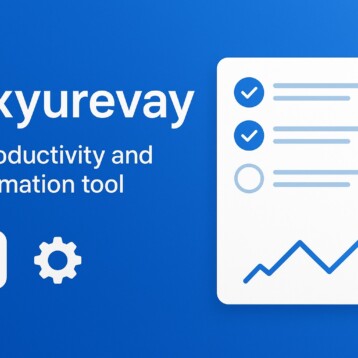
The new generation of employees is fundamentally different than the previous ones. They value their off time more than a generous wage, they are reluctant to companies that don’t put a high emphasis on the employee’s experience at the workplace and this calls for new, innovative practices and technologies that have to be implemented inside HR departments. These practices have to be extended from the recruiting process to the schedule management one, for increased rates of success. Also, what the new generation of employees seems to appreciate the most is an increased sense of fulfillment at the workplace, an aspect that has been valued throughout the years, but seems to accentuate with the coming generations. Below are some of those practices and technologies that will boost your company’s success when it comes to employee recruitment and retention.
Video Interviews are the hot HR trend

Cisco is the company that came with the interviewing-via-video trend and companies all over the world are currently following this practice. Nowadays, given the increasing number of employees that are working remotely, this innovative practice seems to be the most suitable when it comes to recruiting the most competent employees. As the New York Times and Forbes claim, employees working remotely are happier and more productive than their fellows and facilitating the recruitment process for these employees may be increasing your company’s overall productivity levels as well. More than 40% of the American employees were working remotely in 2016, according to a Gallup survey and more than 80% of those reported lower stress levels associated with work. Also, more than 85% admitted that working alone brings them the highest productivity rates. Corporate office jobs are also decreasing in popularity; in this case interviewing via video calls can bring the company and HR department an exquisite balance between quality and cost-cutting measures. With sophisticated technological advancements, these interviewing methods become more accessible to an increasing number of companies and employers all over the world.
Online Time and Schedule Software for a simplified HR workflow

Tracking the working hours of your employees (especially in the case of those working remotely) is one of the most time-consuming and hated duties of HR departments. With recent technological advancement, dedicated software products have emerged for corporate use and simplified significantly the workflow in these departments. With smart features integrated, such as timesheets, overtime tracking features, absenteeism management, time off management as well as budgeting features, these systems find their usefulness in an increasing number of HR departments all over the globe. As the matter of remote work has been brought in discussion previously, these systems are the perfect solution for keeping a close eye on the activity of those specific employees that don’t have the typical corporate office position and prefer working from home. The experts at Timesheet Portal recommend searching for software products that also allow time tracking on projects and splitting those into activities, if the job description itself is a project-based one. With an average of more than 37 working hours per employee weekly, at an EU level, the necessity of finding suitable solutions for time tracking emerges in the case of most companies.
Gamification and the recruitment process

This is a practice first implemented by the Marriott Hotels & Resorts and it consists of accomplishing various tasks on the company’s website as part of the interviewing process. Potential tasks that are part of the job description will draw a bigger number of suitable employees for each position open and decrease the average age window of their potential employees. Being attracted by the new interviewing approach, young individuals will be drawn by the careers available here and adding such recruitment methods to HR department’s arsenal is an amazing innovation that can increase the profitability of the company in the long run.
Rewards for time off and volunteering
In the past, rewarding the employees with the least days off was a common practice, however, progressive-thinking companies acknowledge the importance of a healthy work-life balance and understand that productivity comes from recharging the energy levels during time-off intervals. The number of weekly working hours for men at the level of EU was in 2017 of about 40 hours weekly. With an average number of working hours so high, an increasing number of companies encourage and even implemented rewards for those taking days off more frequently. It has been proven in numerous times that those employees with a higher number of days off also have increased productivity levels. Time off for volunteering is another practice encouraged by large corporations all over the world. In the case of some big names in the tech industry, the time off for volunteering and helping the community is as high as seven days off. This not only encourages the employees to get involved in various social causes, but also it encourages them to become more dedicated and loyal to their work. It also contributes to satisfying the employee and assuring a happy and balanced work-life ratio.
Healthy employees are happy, more productive employees
Employees seem to appreciate more and more paid health screenings, paid sick leave, gym and wellness memberships, and their overall satisfaction levels increase if these are offered by their employers. The new trend in the business world is offering all of the above for all employees, regardless of their time spent with the company. Satisfied employees are generally more productive, and healthy employees are less likely to abuse their paid sick leave. Also, HR departments are quickly learning that facilitating the employee’s access to metal and physical health benefits is a good motivator in the hiring process, even if the wages are not as high as their competitor’s.
These practices and technologies seem to be the newest trends in HR departments all over the globe. Measure and technologies as those presented above have a high potential of drawing talented and productive workforce, retaining it for longer and facilitating cost-effective solutions at a company level.










